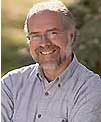I just finished reading “The Time Traveler’s Guide to Medieval England” by Ian Mortimer. Boy, am I glad that I live here and now! In medieval England life was violent, sexist, boxed in a rigid and unfair class and legal system, traveling was a life threatening adventure, and sickness was deadly.
Only the lords and ladies could afford hygiene, i.e. baths on a regular basis. Although public bath houses existed, their services were more for pleasure than cleanliness and extended to more intimate encounters than water and body and therefore their contribution to health and hygiene were dubious.
Above all physicians were ignorant of anatomy (autopsies were forbidden by the Church till the mid 14th century), physiology, and biochemistry. The germ theory was unknown, and so was the circulation of the blood. Illness was divine judgment. Medicine was based on astronomy, the four humors (black bile, yellow bile, phlegm, and blood) and four elements (fire, air, water, and earth). Health was defined as a balance between the four humors and elements. A physical exam was limited to inspecting feces, urine and blood. Treatment was often more lethal than the disease: bloodletting, purging, etc. “The remedy for bladder stone includes dung beetles and crickets and required you to cut off their heads and fry them in oil”, or diseases of the spleen were treated with a concoction of the heads of seven fat bats.
However, as Mortimer points out, these physicians were not ignorant. They possessed a “colossal amount of medical knowledge. It is simply that their knowledge was very different form ours”.
Knowledge of the function of the human organism, causes of diseases and their treatment have come a very long way since then. We, too, possess a “colossal amount of medical knowledge.” Consequently infant mortality is down from 30% in medieval England to 0.68% (although in Baltimore City it’s twice as high at 1.35%!) and life expectancy is up from 35 years (although this number is so low because 30% did not make it to childhood) to 78.4 years. However, more sick people live today than ever before. We still do not know cures for autoimmune diseases, cancer, osteoarthritis, Alzheimer’s, Parkinson’s, Lou Gehrig’s disease, etc. We are satisfied managing illnesses. Concepts like healing, supporting the organism, salutogenesis are not part of the medical curriculum.
Health, illness, aging, and the human body still hold secrets that challenge orthodox science. I believe that we can break through this barrier of ignorance only by keen observation and synthetic or creative (instead of analytical) thinking “outside the box”.
Then my colleagues WILL look back at 20th century medicine and compare our present day procedures to the Dark Ages as Dr. McCoy does in Star Trek’s episode “The Voyage Home”. I humbly hope that my colleagues in the future will also give credit to 20th century medicine’s “colossal knowledge” in spite of it being very, very different.

Peter Hinderberger, M.D., Ph.D., DIHom practices at Ruscombe. The mission of his practice is to promote optimal wellbeing by providing health care through an integrated approach, combining conventional and complementary therapies, which include Anthroposophic medicine, homeopathy, and salutogenesis.
